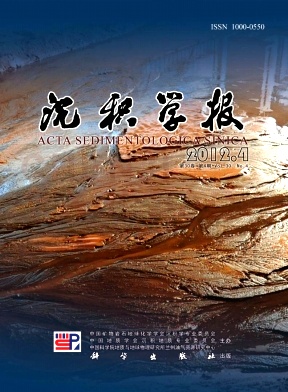Provenance Analysis of Chengzihe and Muling Formation in Jixi Basin, Northeastern China
- Publish Date: 2012-08-10
-
Key words:
- Jixi Basin /
- paleocurrent /
- Chengzihe Formation /
- Muling Formation /
- provenance analysis
Abstract: The field outcrops, especially the arraying direction of gravel and various bedding structures revealed by the outcrops, seismic data, core and heavy mineral data have been fully used to analyze the four key parameters that indicate the paleoprovenance direction, which include paleocurrent directions, structural features of seismic reflection, stability coefficient, differentiation characteristics of heavy mineral assemblage and the sedimentary characteristics of Jixi basin. Comprehensive studies show that the four parameters match well. There were mainly two provenances located in the west and southeast of the basin, respectively, in Chengzihe Formation. The west provenance was the main one, which provided sediments from the northwest, west and southwest to Jixi basin, and gradually headed east while divided into two branches at Hengshan uplift, entered the south and north part of the basin, respectively. After analyzing depositional system of heavy minerals and comparing the types of circumbasin parent rock, west provenance was thought to be primarily from the orogenic belt of XiaoxinganZhangguangcai Range. Progradation configuration in the seismic profiles pointed out that upon the southeast of the basin there existed another subordinate provenance with less influence, which was considered to be the secondary provenance. During the period of Muling Formation, the paleocurrent characteristics revealed that the main traits formed in Chengzihe Formation were mostly inherited, i.e. the basin still had two separate provenances, but the provenances relatively retreated, showing transgression from Chengzihe to Muling Formation, meanwhile, the range of the lake basin became larger. The southwest provenance had a bigger impact area compared with Chengzihe Formation. The features of heavy mineral assemblage reflected that the types of mother rock from the west part of the basin were consistent with orogenic belt of XiaoxinganZhangguangcai Range, which indicated that the west provenance mainly came from the aforementioned orogenic belt, while the mother rock types from southeast site were consistent with Yanji fold belt, illustrating that southeast provenance mainly came from it, gradually augmented its influence on development of Jixi basin from Chengzihe Formation to Muling Formation.
| Citation: | Provenance Analysis of Chengzihe and Muling Formation in Jixi Basin, Northeastern China[J]. Acta Sedimentologica Sinica, 2012, 30(4): 661-671. |






 DownLoad:
DownLoad: